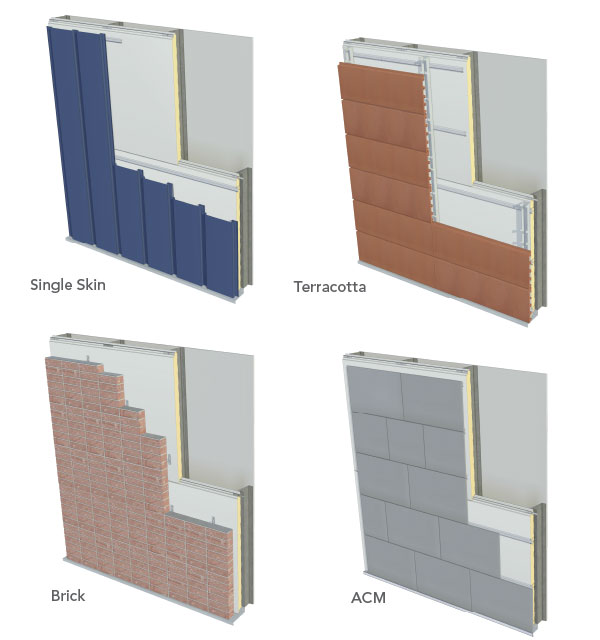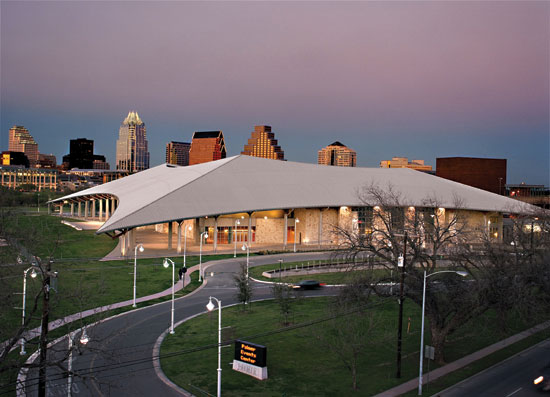Metal Panel Claddings: Varied Expression, Consistent Performance
Today, with increasing frequency, architects are incorporating metal exteriors in building designs for practical and aesthetic reasons. From industrial, agricultural, and cold-storage facilities to educational, civic, and commercial buildings, architects are taking advantage of metal's performance and creative design benefits. In general, one can consider metal claddings in three primary categories:
• Single-skin panels
• Insulated metal panels, or IMPs
• Metal composite materials, or MCMs, which are sandwich systems generally with solid, plastic cores
These products are most commonly made with aluminum, but they also often feature skins of steel, copper, zinc, and terne, an alloy coating of about half tin and half zinc.

Graphic courtesy of MBCI
Of course, natural materials like copper and zinc, which are considerably more expensive than other materials, also have some allure for their semi-precious character. They are often chosen by architects for their aesthetics—particularly the patina that results from aging and oxidation—and also for their well-established durability. Yet there has been a move over several decades toward the less expensive, more highly durable metals that are offered in a range of specialized coatings of varied colors and performance attributes.
The Whole Building Design Guide, a resource for architects maintained online by the National Institute of Building Science (NIBS), explains that “metal panel systems are generally proprietary designs in which a manufacturer adapts its system to the architect's design.” They can be manufactured in a variety of shapes—including radiused and otherwise curved systems, an example of which was incorporated as a design feature on the exterior of Legacy Junior High School in Layton, Utah, designed by VCBO Architecture. Many sizes, textures, and colors are available to meet design specifications, and the panels can be installed vertically or horizontally, with exposed or concealed fasteners. Exposed fasteners, which are often chosen for aesthetic reasons, can give exterior cladding an industrial, bolt-on look. The articulated hardware can also add rhythm and depth.
Because metal is an inherently flexible product and relatively easy to work with, the wall and roof panels are compatible with other building materials and integrate well with windows and other fenestration systems. Scott Kriner, the Metal Construction Association's technical director, points out that today's metal-panel systems are a far cry from our grandparents' metal buildings—the utilitarian structures some architects may associate with nondescript industrial and agricultural facilities. In recent years, aesthetically compelling buildings like the Bridges Center in Memphis, Tennessee, a geometrically intriguing glass and metal building designed by Coleman Coker and his firm, buildingstudio, support Kriner's argument.

Photo courtesy of MBCI
Lester E. Palmer Events Center in Austin, Texas, designed by Barnes Gromatzky Kosarek Architects, has a complex roof constructed using a steel panel system with an aluminum-zinc coat.









